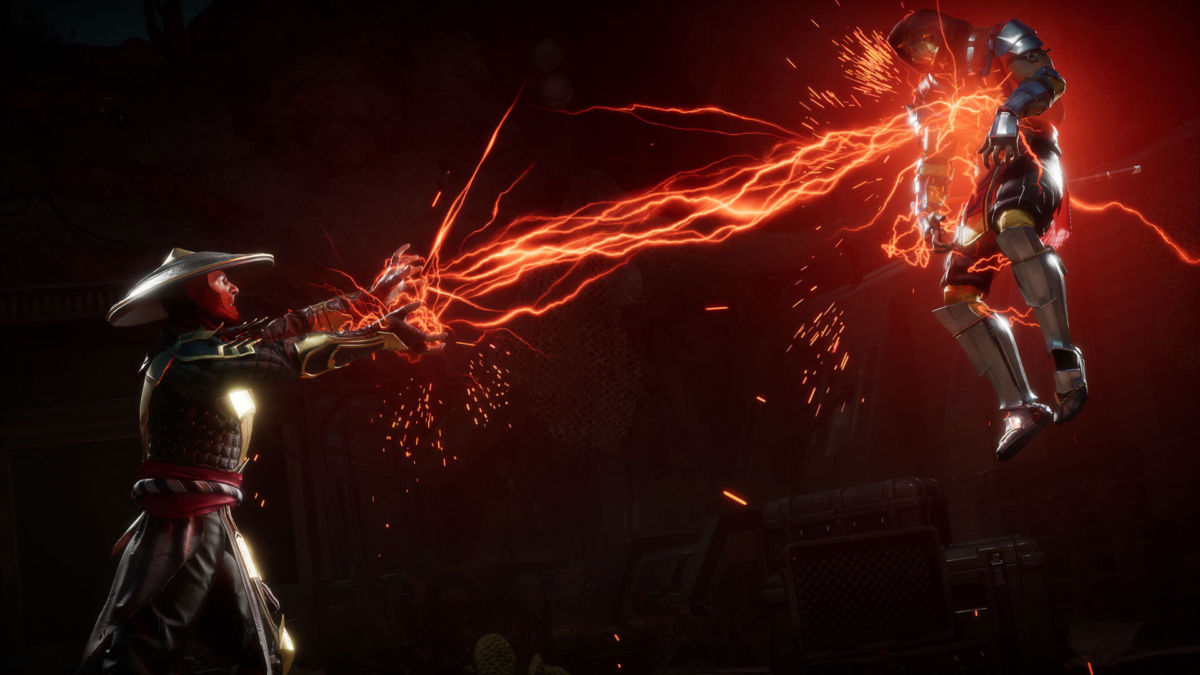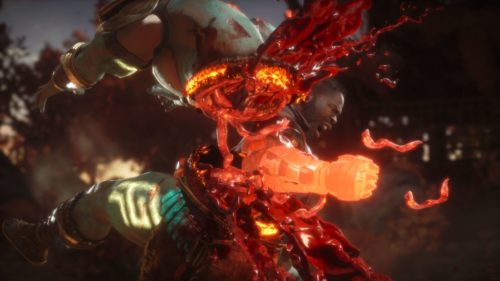
Mortal Kombat 11 is a great game. Unquestionably, in terms of story, graphics, fatalities, fanservice and, most importantly, gameplay, Mortal Kombat 11 is the best the series has ever been. So why is it only getting an 8/10 (yes, I know you’ve already scrolled to the bottom to check the score)? As much as MK 11 has plenty to offer, refinements need to be made, and sometimes it gets in its own way.
The latest instalment of the 27 year old series, Mortal Kombat 11 continues the long run of form that Netherrealm Studios have cultivated thus far, with a stellar Story Mode, simplistic core gameplay and more gory fatalities than you can shake a 1993 congressional hearing at. Unfortunately, the content grind is ridiculously long and could do with some further refinement in the coming weeks. Or should that be koming weeks? Mortal Kombat spelling is weird.
The gameplay itself is extremely fun, with enough simplicity that casual players can still have fun, while offering plenty of depth and kombos to discover. At its core, MK 11 is a five button fighting game, with four buttons for punches and kicks and one additional block button, and each character has their own special moves and abilities.
Beyond that, there’s the amplify button tied to RB, which is used in conjunction with special moves to change their properties, often as a way to deal more damage or extend combos. RB is also used for environmental interactions, so you’re always just one button away from launching that poor innocent Tarkatan at your opponent.

On an advanced level, the core game revolves around mix-ups and mind games, keeping your opponents guessing with a variety of high/low attacks, frame traps and more. You don’t necessarily need to know the biggest combos in order to succeed, but it does help if you know them, and it is incredibly satisfying to discover what moves combine with what.
Two of the new features to the series are Fatal Blows and Krushing Blows, both of which add new layers of strategy to the game. Fatal Blows are your comeback mechanic; an easily triggered Super Move activated by pressing both triggers together that deletes a third of your opponent’s lifebar if successfully hit. The Fatal Blow is only accessible once you hit 30% life, and once you hit it, you can’t use it again for the rest of the match.
Not being able to use a Fatal Blow twice has two benefits. Firstly, the use of the Fatal Blow becomes much more tactical than any super move in fighting games. Do you use one to win a close round, knowing full well the opponent can retaliate in the next, or do you hold on to it in case you need it later? It requires a lot of thought. Secondly, only having to see these big cinematic moves once per match maximum helps reduce the tediousness of seeing them repeatedly.
Krushing Blows operate on a similar principle to Fatal Blows, as they can only be used once per match. Certain moves and combos in a character’s arsenal, when a certain prerequisite is fulfilled, trigger a Krushing Blow. The most obvious and perhaps common is getting a counter hit on an uppercut, allowing you to follow up with a high damage juggle combo.
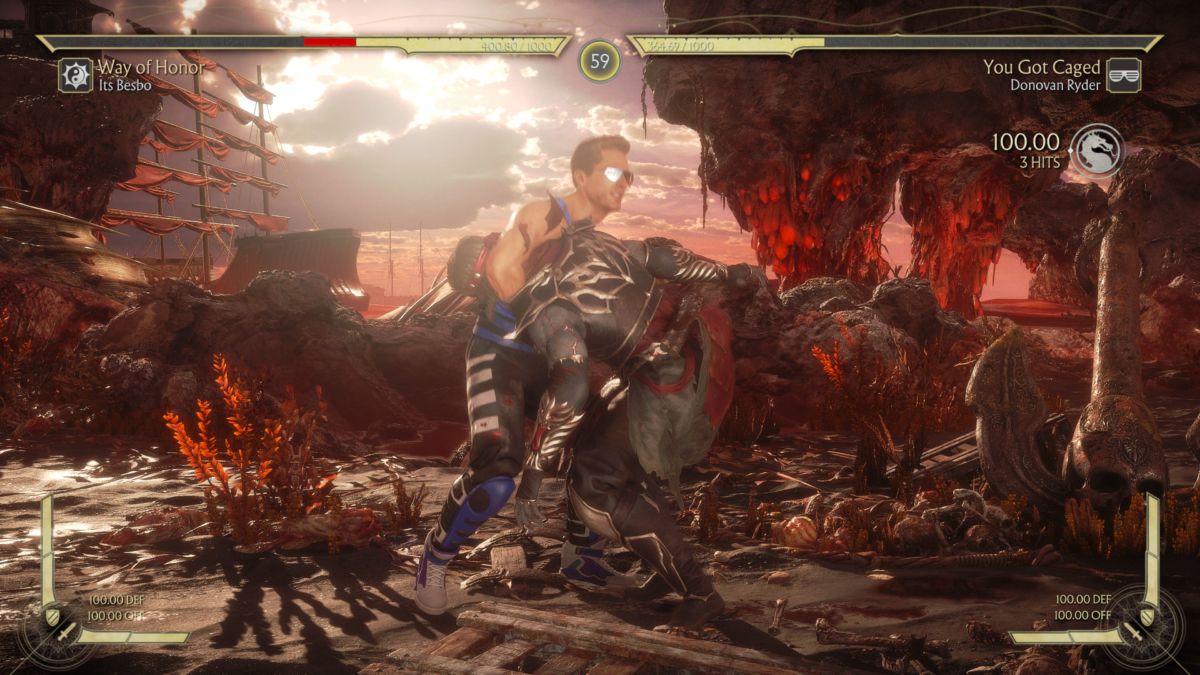
Krushing Blows will be what separate high level players from everyone else. Knowing that Scorpion can trigger a Krushing Blow by hitting an amplified chain grab from full screen means that your opponent has one less tool in their arsenal, plus it means you’ll need to spend more time in the lab getting to grips with your own character.
Fortunately, the tutorial mode is the most elaborate the series has ever had, which is good. These days, fighting games that don’t offer fully fledged training modes and simply expect you to get by on the basics don’t tend to do well. With Mortal Kombat’s mainstream appeal meaning that more casual players will be purchasing the game, the extensive tutorials are very much welcomed.
That said, some players could do with a little more information when it comes to the character specific tutorials. The tutorials teach special moves and combo strings, but don’t give full lessons on how to properly combine those moves, only a text box in between lessons. There are also some missing lessons based on moves tied to moves utilised in specific variations, meaning you’ll have to teach yourself in some cases.
Speaking of variations. the Kustom Variations allow you to create your own loadouts with different special moves, along with plenty of customisation items and cosmetics to boot. Experimenting with different moves in your variations increases the game’s lifespan even more, as you tinker and experiment to find the best variation possible, but these custom variations aren’t allowed in competitive matches.
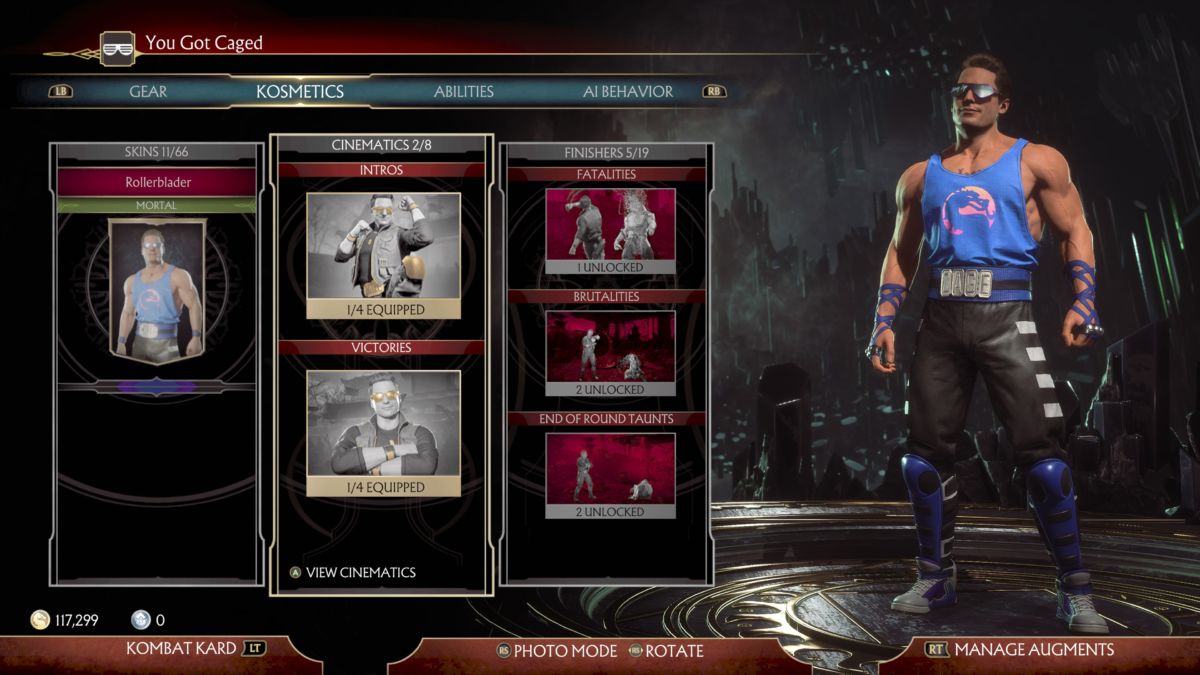
While not allowing custom variations in ranked and competitive matches is arguably the right move, as it would make Mortal Kombat 11 so much harder to balance, the problem is there are only 2 default variations for each character, a step down from the 3 variations per character in Mortal Kombat X.
There’s the possibility that more default variations will be added to the game in a patch or update, and they really should if they want the competitive scene to remain fresh in the long run, but in the meantime, half of the special moves for each character won’t see the light of day in ranked matches, and that feels like a waste.
It wouldn’t be a Mortal Kombat game without an abundance of modes, and MK 11 is no exception. The main attraction of the Story Mode is absolutely insane, and filled with fan service, references, throwbacks and surprises that fans of the franchise will absolutely love, while incorporating new nuances and revelations that deepen the world of Mortal Kombat.
Netherrealm fans know the formula by now, as you control a different character each chapter in an all encompassing story where the villainous Kronika tries to reset the Mortal Kombat timeline in her own image. With time travel shenanigans in full effect, characters from past and present combine on both sides to fight the biggest war in the series’ history.

The Netherrealm Story Modes have received a well-earned reputation for their beautiful cinematics, stellar facial animations and fantastic voice acting, which is true across the board with Mortal Kombat 11. The only exception is Ronda Rousey’s turn as Sonya Blade, which you could consider to be passable at best and awful at worst. She just sounds constantly bored, which ruins the overall experience.
Particular mention needs to be made about the graphics and art style though, as they are absolutely incredible here. The detailed character models and facial animations help make the story feel more engaging, while MK 11’s visuals have improved exponentially compared to MK X. The world feels alive with colour, and not just the red that frequently spills onto the arena, making the game more vibrant and eye-catching.
As for your other modes, Klassic Towers is your bread and butter experience single player experience, with three difficulties of arcade ladders, survival mode and an endless challenge. All the regular modes are there and accounted for, but it’s the new modes that have earned the lion’s share of the attention, and for all the wrong reasons.
I’ve already spoken about The Krypt, and you can find more of those opinions here, but suffice to say, it’s a huge waste of time. Diehard fans will definitely enjoy exploring a fully rendered version of Shang Tsung’s Island, ingesting all the lore and iconic imagery of the area, but the randomised chest placements make the mode feel unrewarding.
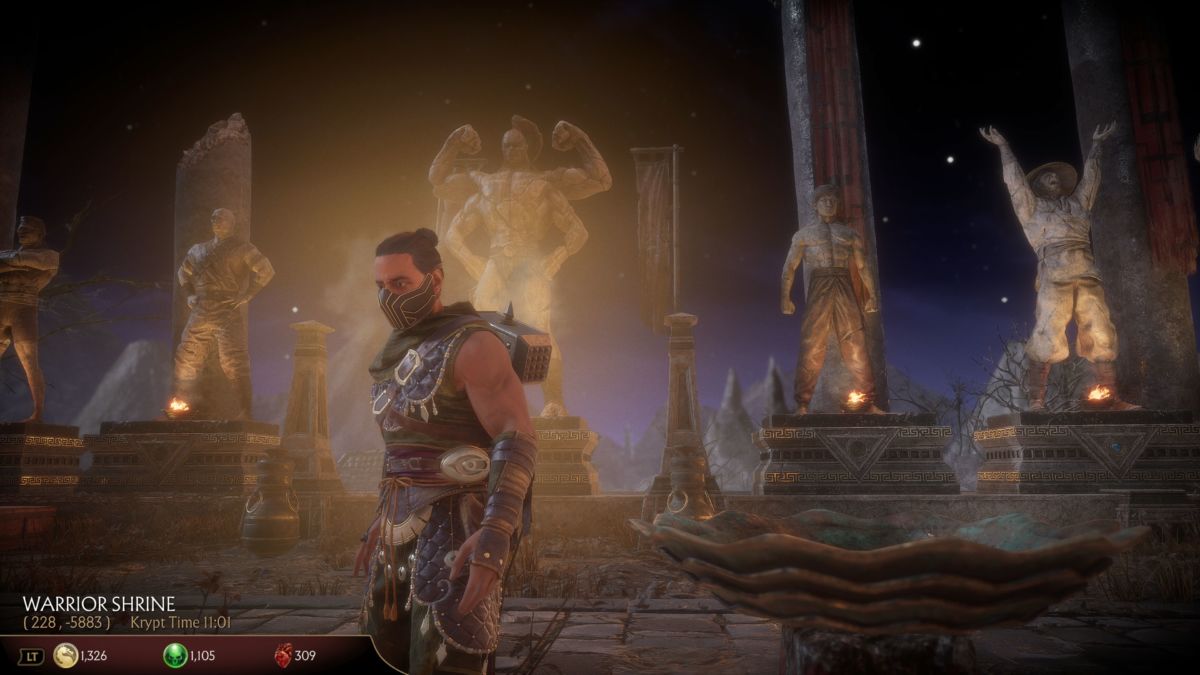
Netherrealm have verified that the contents of The Krypt aren’t random, just the chest placements, but they still feel like loot boxes. Weirdly enough though, that isn’t the full issue. As much as people have bashed MK 11 for microtransactions and the like, spending money to unlock everything would probably be the preferable option for most players. It’s not about the cost, it’s the time.
Injustice 2 had loot boxes as well, the difference being that Injustice 2 doled out loot boxes like sweets, while Mortal Kombat 11 hands out a bunch of different currencies and says “hey, if you want your rewards, go play this 3D puzzle solving game mode that looks like a budget God of War”.
The highest tiers of chest/statue/loot box require you to find several key items in order to open them. Not everyone has the time to go through the rigmarole of unlocking items in this fashion, and currency rewards currently aren’t given often enough to make exploring the Krypt for longer than five minutes a worthwhile experience.
The Towers of Time mode is Mortal Kombat’s equivalent of the Multiverse Mode in Injustice 2, with a rotating series of challenges refreshed on a periodic basis. These challenges can vary from having a central theme, like a Kano themed set of Towers, to Towers focusing on a certain element or just one particular boss fight.

The problem, at least when the mode first launched, is that the mode was needlessly difficult for not a lot of reward. The majority of fights eschew the standard 1v1 fight, favouring something more reminiscent of a Marvel vs Capcom game, with off screen projectiles and assists cluttering the screen, not allowing you to get any offense in.
Lots of the modifiers also seem to counter close range combat too effectively, with attacks that interrupt combos and throws. It’s like you have to learn a completely separate way of playing the game, such as turning Johnny Cage into a zoning character, making for an experience that sucks the joy out of the core gameplay.
That said, creator Ed Boon has already confirmed that both The Krypt’s rewards and the difficulty/rewards for Towers of Time will be patched, with a server side update already live and a full update in the coming days. The server side changes have yielded an immediate benefit, as modifiers occur less often and enemy health isn’t as insurmountable, but there’s still more to be done. Expect the mode to be much better within the next week, rendering this entire criticism null and void.
The online modes are pretty standard fare, with casual and ranked matches, along with individual lobbies and much larger rooms where you can “socialise” and challenge players to matches. I say “socialise”, as the room chat is mostly just filled with arrogant morons who proclaim everyone else to be trash.
The netcode is decent, with smooth matches for the most part. To Mortal Kombat 11’s credit, the game does an amazing job of conveying the other player’s connection, giving you their current ping and whether or not they have a wired or wireless connection, so it allows you to pick the matches you know will work best. You won’t have any surprise 200 ms ping laglords trying to steal wins off you in matchmaking.
Mortal Kombat 11, as a total package, has pretty much everything you could ask for from a fighting game: great graphics, amazing core gameplay, an in-depth tutorial, plenty of content, a healthy online offering and a dose of originality to boot. Unfortunately, some of those modes and features haven’t properly been utilised yet, but here’s hoping things will change very soon.
Some of the coverage you find on Cultured Vultures contains affiliate links, which provide us with small commissions based on purchases made from visiting our site.
